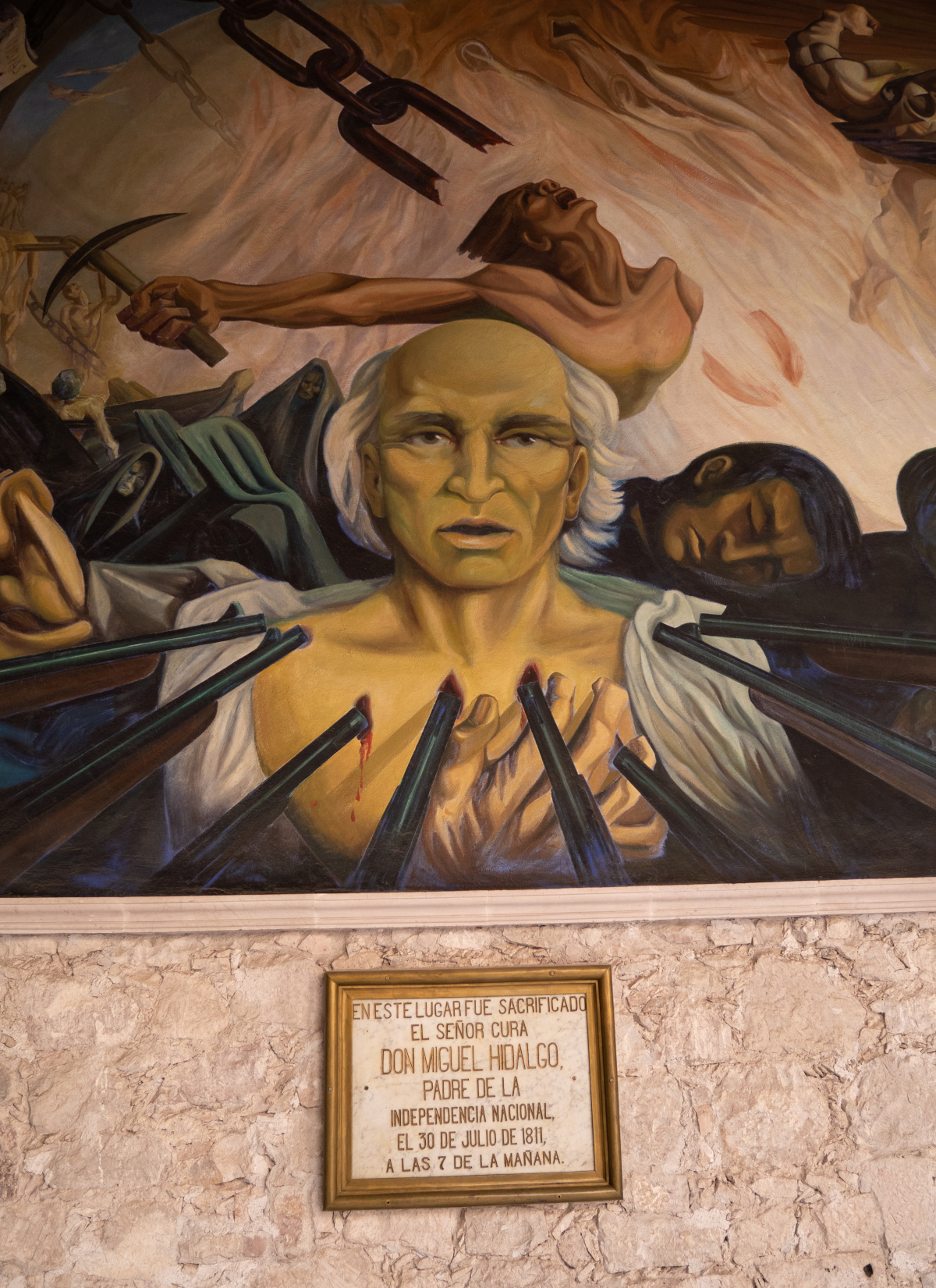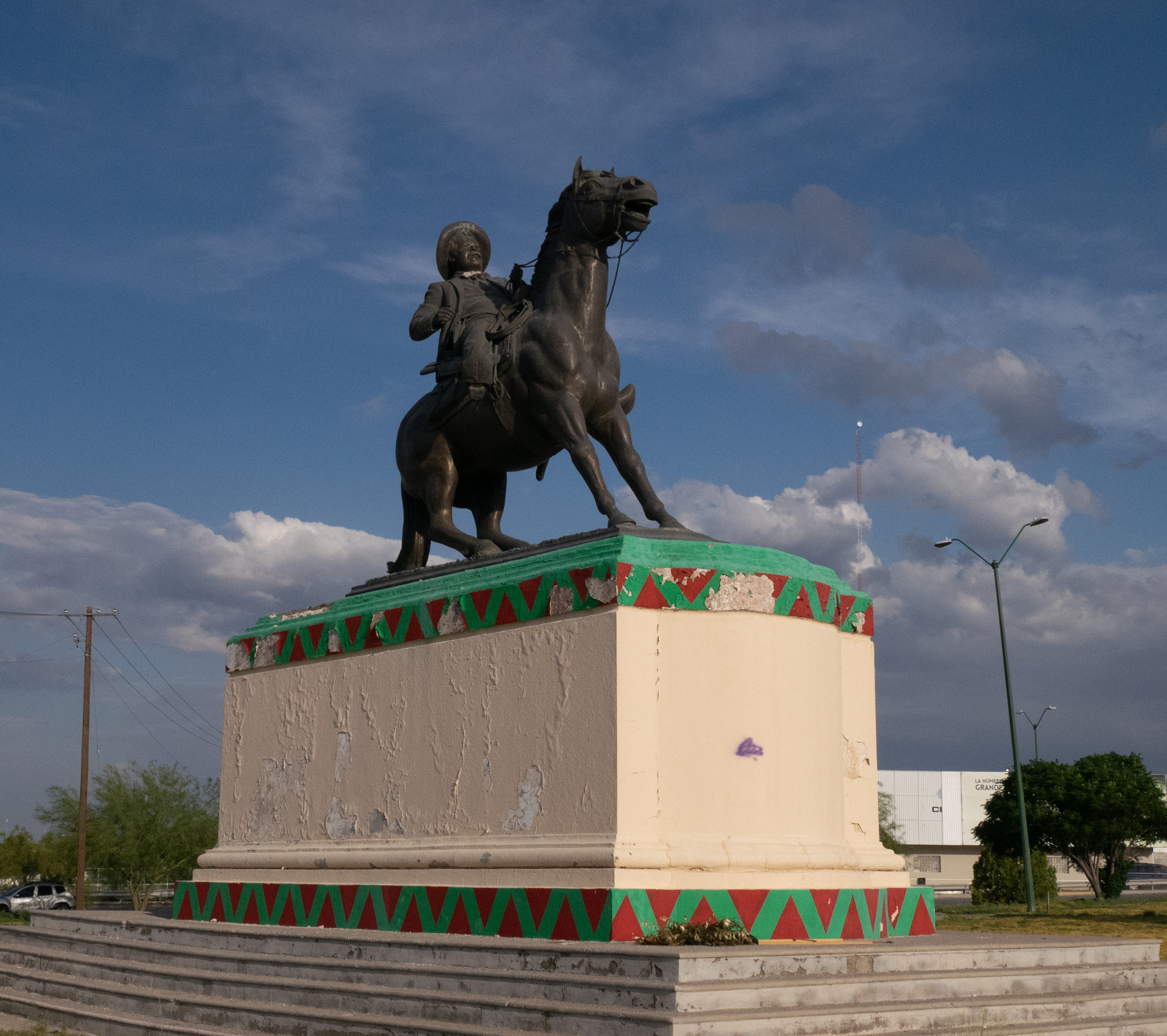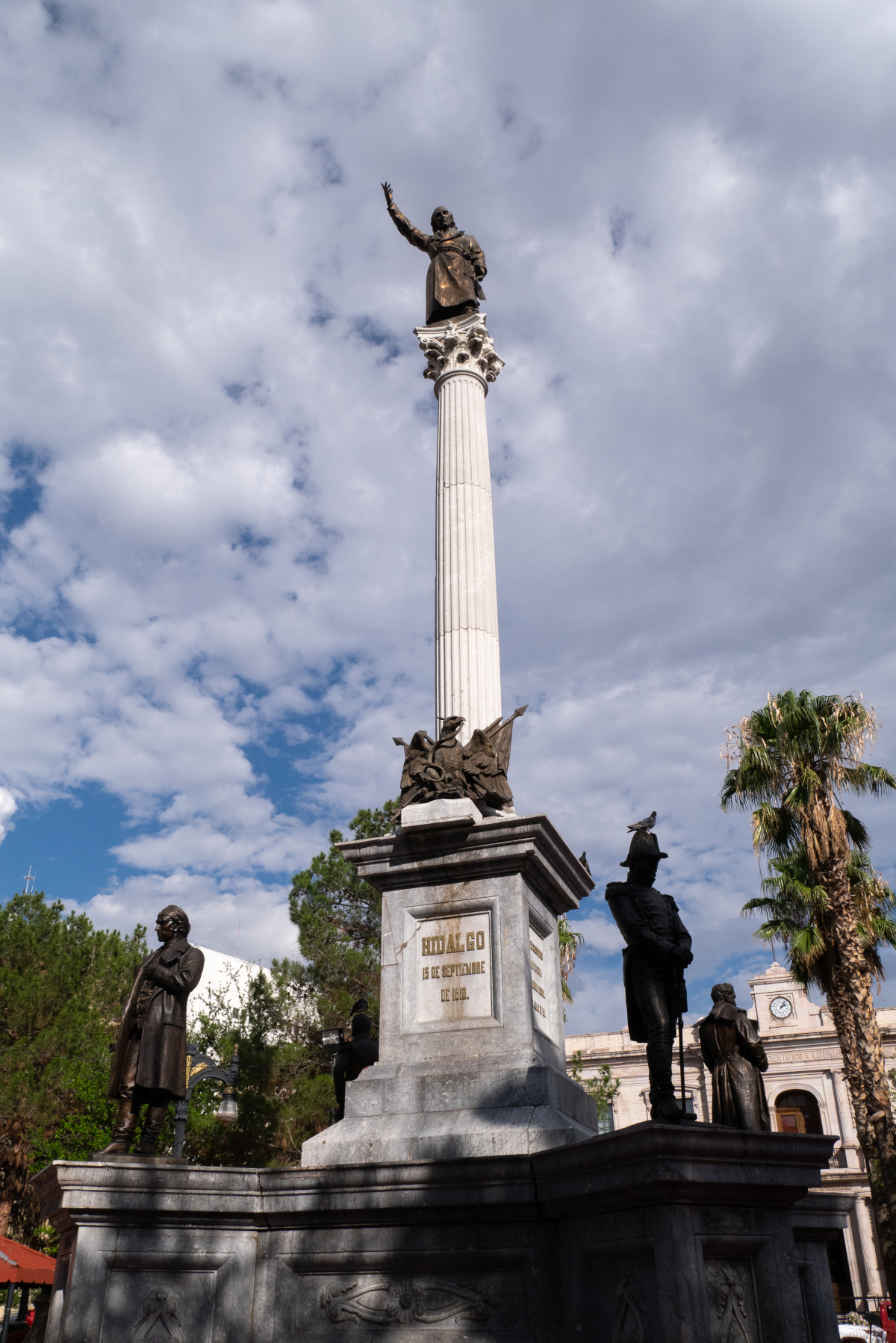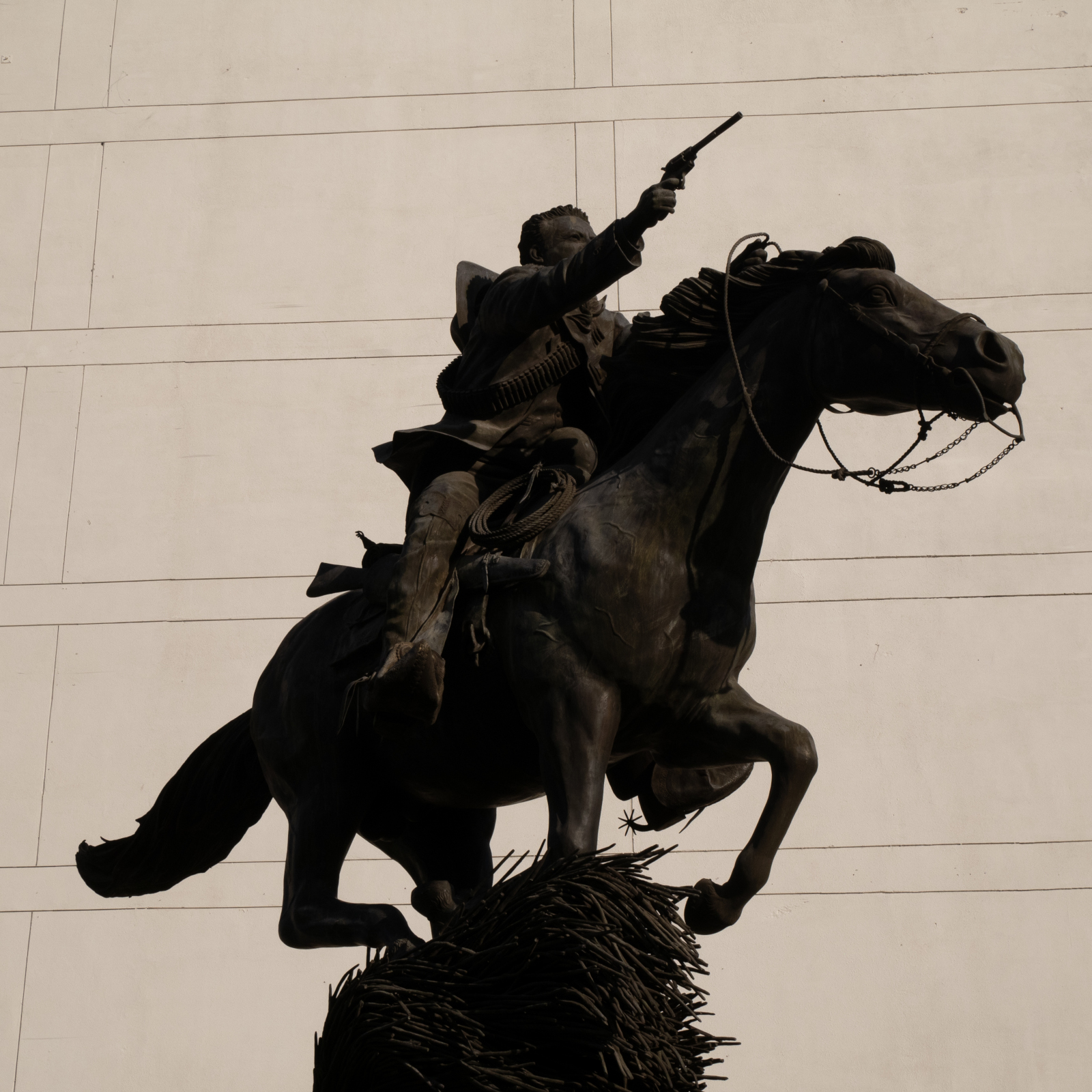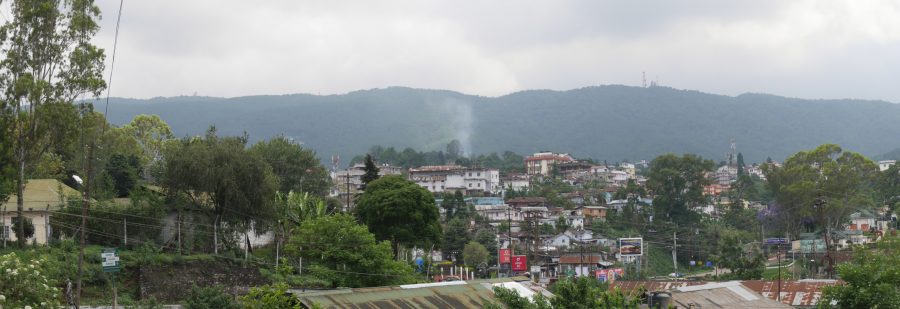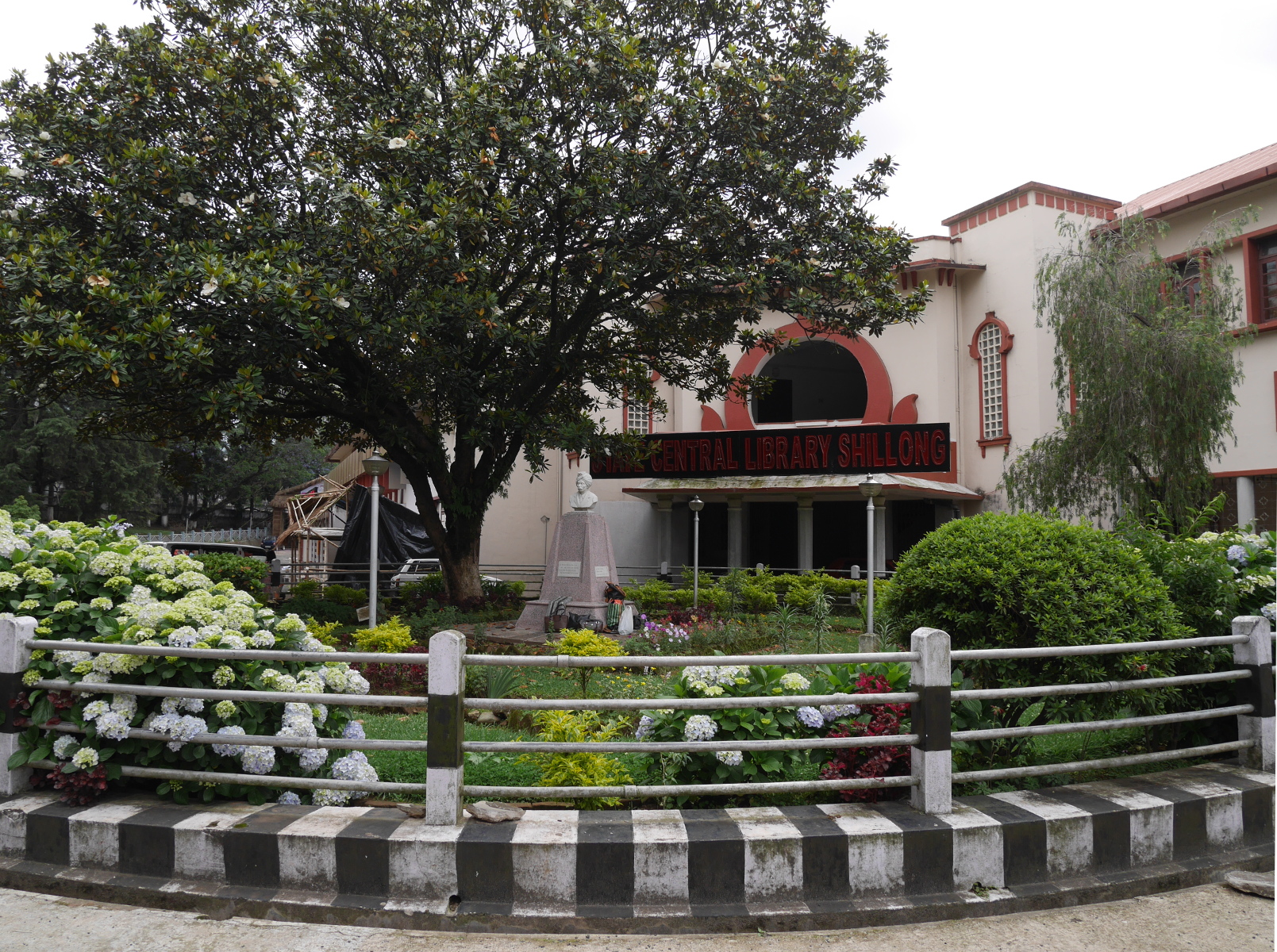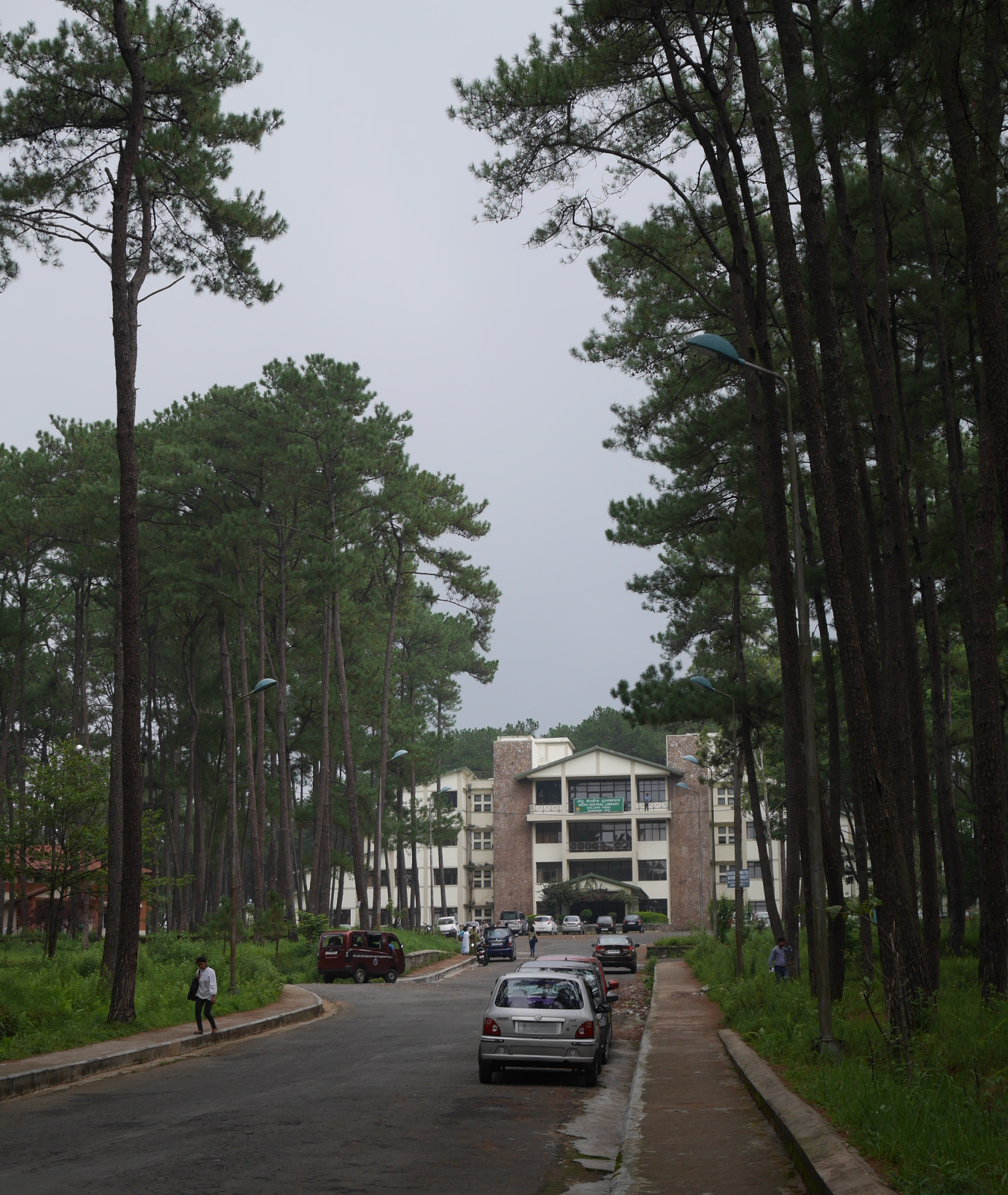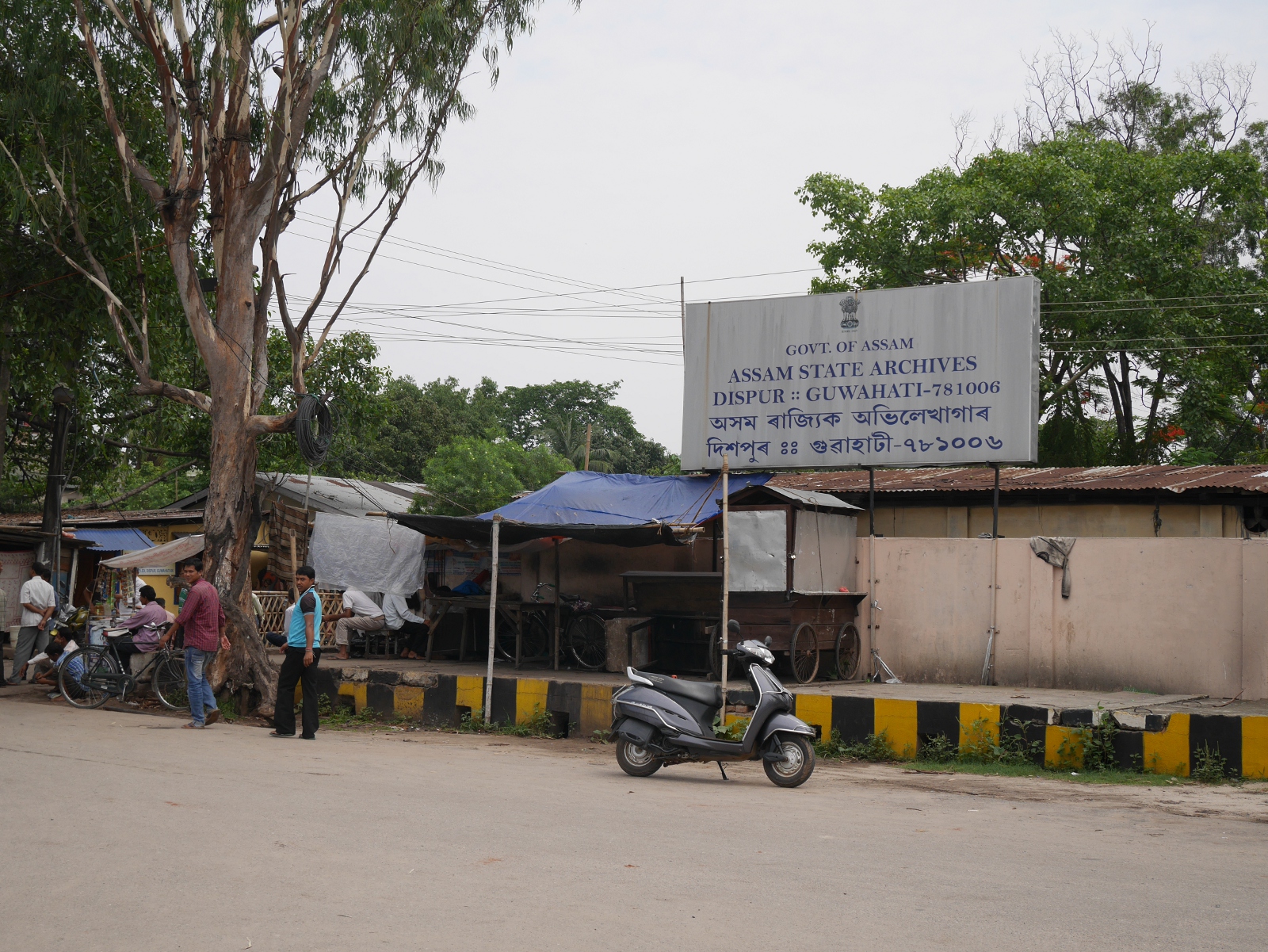Chihuahua, a city of about a million people, is the capital of the state by the same name in northern Mexico. Chihuahua city is about four hours south of Ciudad Juárez and the border with the United States. Mexico City is a long way away from Chihuahua, but Chihuahua is nevertheless very much a part of Mexico.
Mexico is a country that loves its national heroes, and there are two heroes that loom particularly large in Chihuahua: Miguel Hidalgo and Francisco “Pancho” Villa. Both of them were real people who did real things, but like national heroes everywhere, they have been mythologized. This myth-making supports a particular image of what Mexico is or should be.
Miguel Hidalgo started the rebellion against Spanish rule that led eventually to Mexico’s independence. Hidalgo was a Catholic priest in the town of Dolores in central Mexico, and it was there that he declared his revolt on September 16, 1810 (111 years ago today). He led an irregular army to some early successes against the Spanish, but ultimately he was defeated and captured. The Spanish executed him in Chihuahua on July 30, 1811. It would take another ten years of bitter fighting before Mexico would finally win its independence from Spain.
Pancho Villa was an important figure in a later period of upheaval in Mexican history, the Mexican Revolution. He was a bandit working in the mountains of northern Mexico, reputed for stealing from the rich and giving to the poor like Robin Hood. In 1910, he threw in his lot with Francisco I. Madero and the Constitutionalists, who were fighting to overthrow the dictatorship of Porfirio Díaz. After Díaz was defeated and Madero became president, Madero’s general Victoriano Huerta turned against Villa, who barely escaped execution and fled to El Paso. Huerta ended up betraying Madero as well, overthrowing and assassinating him in a coup.
Meanwhile, Villa built up his own army, División del Norte, which helped defeat Huerta. Crucially, he retook the border town of Ciudad Juárez for the Constitutionalists. But before long, Villa had a falling-out with the new leader of the Constitutionalists, Venustiano Carranza. He was sidelined in Mexican politics as Carranza got official diplomatic recognition from the United States. In March 1916, he demonstrated that Carranza did not in fact control all of Mexico by raiding the border town of Columbus, New Mexico. Villa’s band killed about twenty people before escaping back across the border. The US Army followed in hot pursuit. This punitive expedition, led by General John J. Pershing, spent the better part of a year chasing Villa around northern Mexico, but they were never able to catch him. (It ended when the US Army was recalled from Mexico to fight in Europe in World War I.)
Ultimately, Villa surrendered to the Mexican government after Carranza’s death in 1920. He retired from the outlaw life and settled on a ranch, but his old enemies caught up with him and assassinated him in 1923.
Both Hidalgo and Villa are remembered as being heroes, but the reality, as usual, is a little more complicated. Hidalgo is the father of Mexican independence, but Mexico was not freed from Spanish rule until more than ten years after his death. The man who actually liberated Mexico was Agustín de Iturbide, but he isn’t well-remembered in Mexico anymore. The reason is that he briefly ruled Mexico as an emperor, but Mexico shortly afterward turned toward republicanism. Iturbide went into exile; when he returned to Mexico in an attempt to return to power, he was executed! Hidalgo was never an emperor of anything, and thus he is a much more palatable national hero for the republic of Mexico.
As for Villa, he was by trade a bandit, and he could be incredibly cruel. He and his followers were responsible for countless murders in northern Mexico. The Mexican Revolution is remembered as being a story of good guys and bad guys. The good guys were the Constitutionalists: Madero, Villa, Carranza, and others; while the bad guys were the counter-revolutionaries, notably Díaz and Huerta. But the Constitutionalists didn’t just fight the counter-revolutionaries; they also spent a lot of time fighting each other! In death, Carranza and Villa have been made into heroes of the revolution, but they were enemies of each other in life.
None of this is to say that Mexico shouldn’t remember Hidalgo or Villa, or not have national heroes at all. Every country needs its heroes. But when we remember our heroes—whatever country we are from—we shouldn’t be satisfied with the nationalistic myths. Instead, we should view these people with a more critical eye, to see the aspects of their story that the nationalistic myths might obscure.

